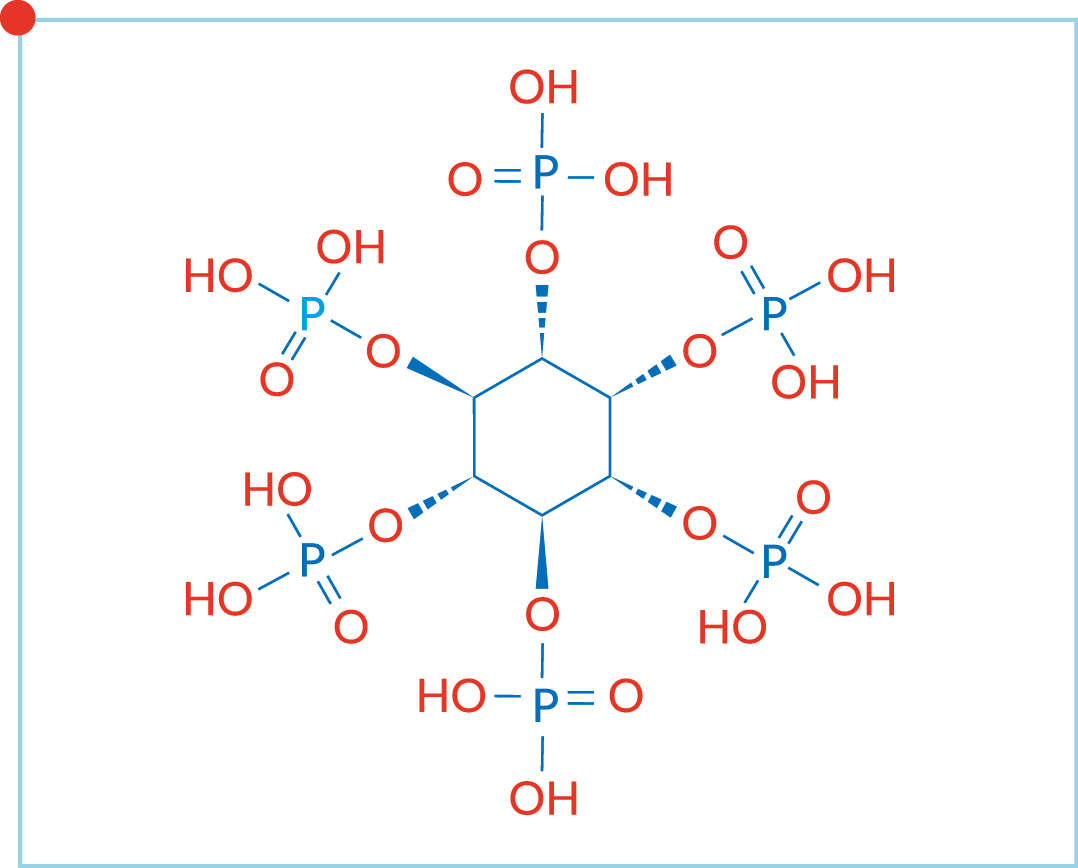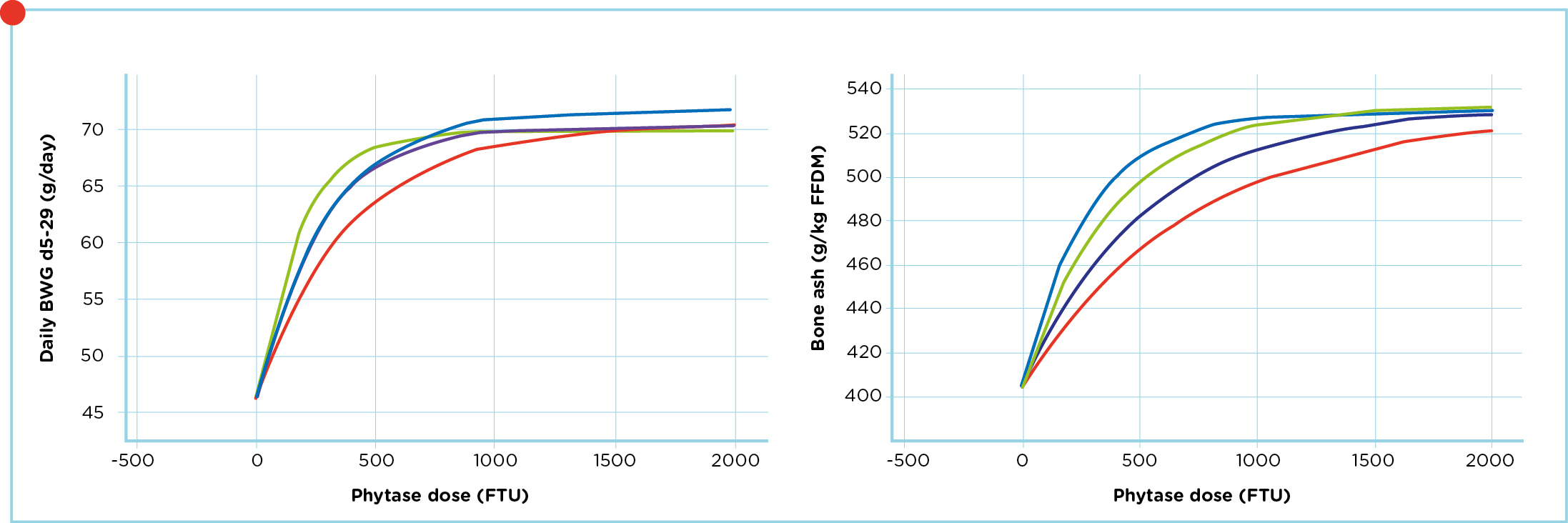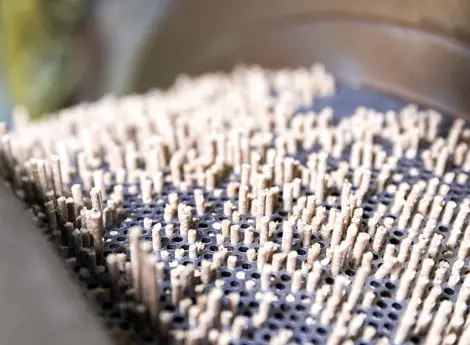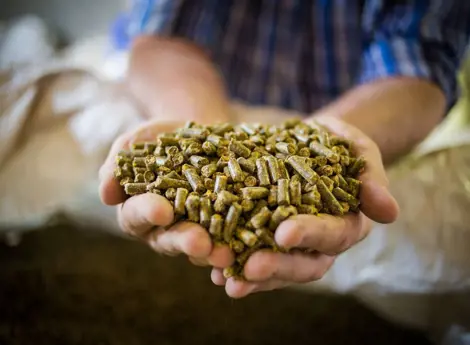How to use phytase in monogastrics
Enzymes are important in the feed digestion of monogastric animals. By adding specialized enzymes, the animal can optimally degrade the nutrients present. Feed enzymes enhance the efficiency of meat and egg production by improving the nutrient utilization and reducing animal excreta.

This article will focus on phytase, one of the best known and commonly used enzymes in animal nutrition. Phytase was discovered already in the early 20th century and commercialized in the late 1980’s. Traditionally, the reason to apply phytase in monogastric diets is to obtain an efficient release of phosphorus.
Dietary phosphorus - essential for life
Phosphorus plays an essential role in cellular metabolism, skeletal tissue, protein synthesis and nerve functions:
- As a component of phospholipids, it is a critical component of cell membranes
- It serves as a functional compound of several energyrich associations in the body such as Adenosinetriphosphate and -diphosphate (ATP & ADP)
- As a key component of nucleic acids (DNA), reproductive function (including eggshell formation)
- Appetite control
In case of phosphorus deficiency, the symptoms vary but, in all cases, they are associated with:
- Reduced feed intake Impaired growth
- Compromised health
Finally, a deficiency of phosphorus will result in:
- Reduction in plasma phosphate concentrations
- Followed by resorption of phosphorus and calcium from bones, causing a weakened skeleton
An adequate supply of phosphorus in the feed is, therefore, crucial for health and optimal production of pigs and poultry.
Phytate - Also a major antinutrional factor
In monogastric diets a large part of the dietary phosphorus is coming from the (plant based) raw materials. In plants phosphorus is mainly stored in the seeds in the form of phytic acid:
- Phytic acid holds six phosphate groups (inositol hexaphosphate or 6 phosphate inositol)
- Phytic acid, which itself is negatively charged, occurs mainly as a complex with cations such as calcium (Ca++), iron (Fe+++), zinc (Zn++), magnesium (Mg++), potassium (K+) and manganese (Mn++)
- These complexes are called phytates
- Phytates can also form other undigestible complexes with amino-acids, polysaccharides and fatty acids
- These phytate complexes are usually already present in plants
- More important, because phytate is negatively charged at a low pH, all these complexes are quickly formed in the stomach and become insoluble
- Therefore, phytate is an anti-nutritional factor (ANF) due to its binding capacity, which makes nutrients unavailable

Phytase
The phosphorous present in phytic acid can only be broken down by specific phytases which are not present in the digestive tract of poultry and pigs. The specialized phytase catalyzes the hydrolyzation of phytic acid into inositol and phosphorus. As a result, more phosphorus can be released from the source. In addition, phytase also prevents the formation of other complexes and helps them dissolve faster in the stomach. This, in combination with other enzymes and an optimal pH, has a positive influence on the digestibility of proteins, carbohydrates and fats. Different phytase sources are active under specific micro-conditions in various parts of the digestive tract depending on their respective sensitivity towards:
- pH
- Temperature
- Time
- Enzyme – substrate relation
- Moisture level
- Other (chemical) components
Phytase sources that have a high and a fast action in the stomach, will give the highest ANF reduction.
Objective evaluation
Different phytase products typically make variable amounts of nutrients available in each feed. In addition, there also is a difference in anti-nutritional effect between the different sources of phytases. Suppliers in most cases apply their own matrix values. Also, to further complicate product evaluation, different suppliers apply different units (e.g. FTU and FYT). We as Koudijs therefore perform our research to evaluate performance of phytases from various sources through:
- Efficacy tests on our research farms
- Literature studies
- Stability and recovery tests in our own feed factories under common practice circumstances, as well as under more challenging circumstances
- Laboratory analyses in cooperation with the European standard lab for phytase analysis (LUFA)
- By performing a standardized laboratory analysis, we can further evaluate and confirm the results from the practical trials
- Frequently we perform validation trials of all phytase products. This in order to ensure that our data is still valid and up to date
- Methods are adjusted and based on standard international procedures

Application - How to calculate with phytase?
As explained, phytase does not only allow a higher mineral release, but it also improves the protein and energy use. Phytase can therefore to a certain extent replace other nutrients in the feed. Figure 2 shows that the efficacy of phytase depends on type and level. Koudijs developed his own matrix values allowing an objective comparison. Only by using correct matrixes in your formulation program, taking the specific characteristics of each diet into account, the most costeffective phytase source and level can be selected. For an adequate comparison you should at least calculate with:
- Different phytase types & prices
- Efficacy of each type of phytase in each level for:
– Digestible phosphorus
– Available calcium
– Digestible amino acids
– Net energy - Available inositol phosphate of each raw material
Superdosing of phytase
The general advice is to calculate the most costeffective dose of phytase in the total feed composition. Nevertheless, Koudijs recommends higher dosing levels of phytase in some circumstances. We call this superdosing. Koudijs trials show an additional effect on technical results through a more intensive and faster breakdown of phytate in the stomach, and therefore a reduced antinutritional effect. In addition, inositol (residual sugar after complete phytate hydrolysis) has a prebiotic effect in the intestine. For this reason, superdosing is used for animal categories where extra support is desired:
- Young piglets and poultry
- Early development of bone and carcass structure
- Improved intestinal health
• Increased digestibility
• Prebiotic effect
• Reduced buffering capacity of minerals (young piglets) - Sows
- Development of bone structure
– Support of mineral, energy and protein mobilization around farrowing - Animals under (heat) stress
- Extra support of mineral, energy and protein mobilization
Conclusions
Concluding, phytase is an important additive, of which the product evaluation can be done accurately. Most cost-effective dosing should be calculated in total feed optimization. Koudijs matrix values offer an objective and independent way to evaluate and optimize the total feed. Superdosing is used for animal categories where extra support is desired. Koudijs is not only a supplier of tailored products but does also support you with nutritional solutions for market specific situations. In addition to the afore mentioned economic and health effects of phytase, it also has a positive impact on the environment. Correct use of phytase can reduce the use of resources. All in all, improving the sustainability of our food production.




